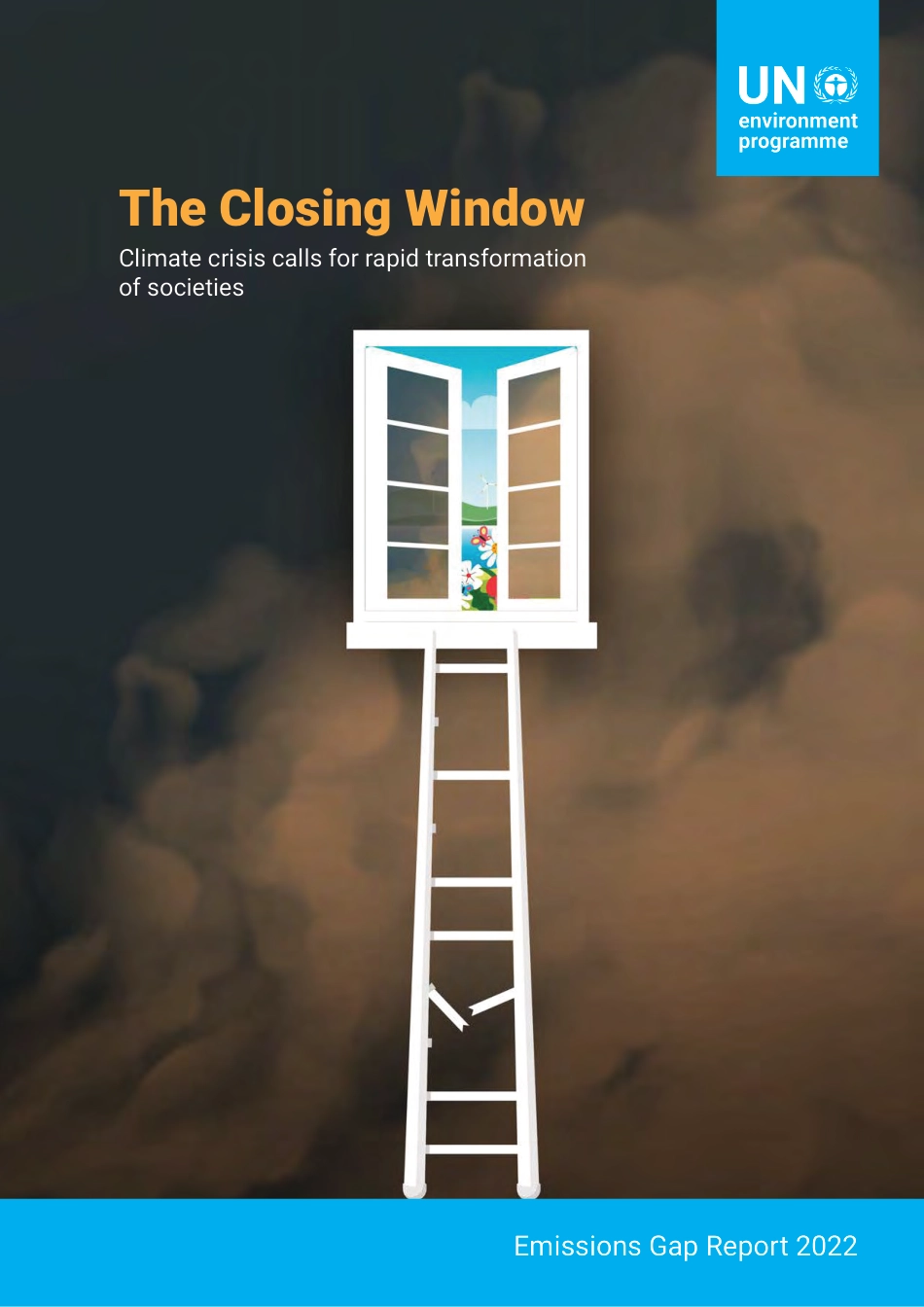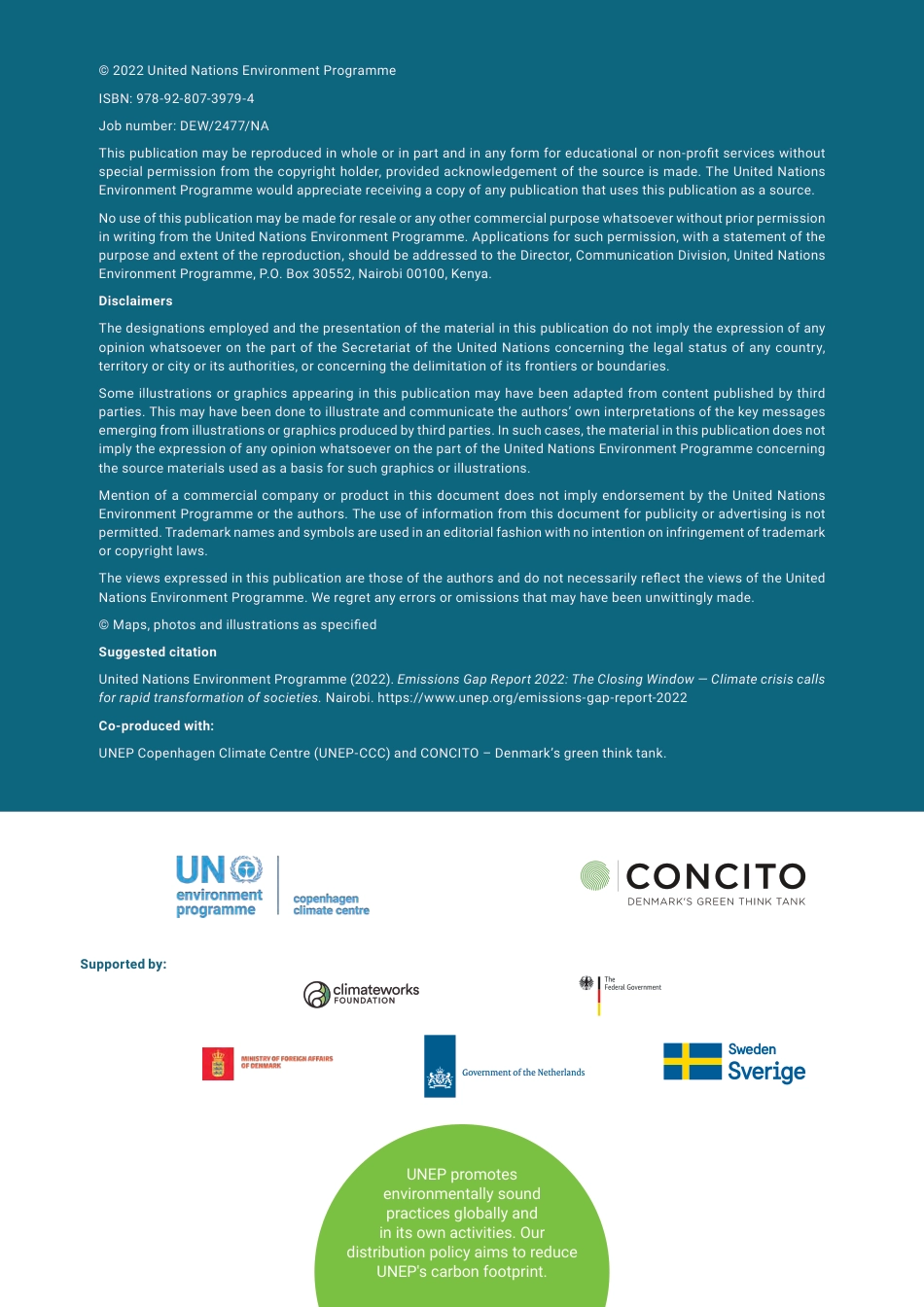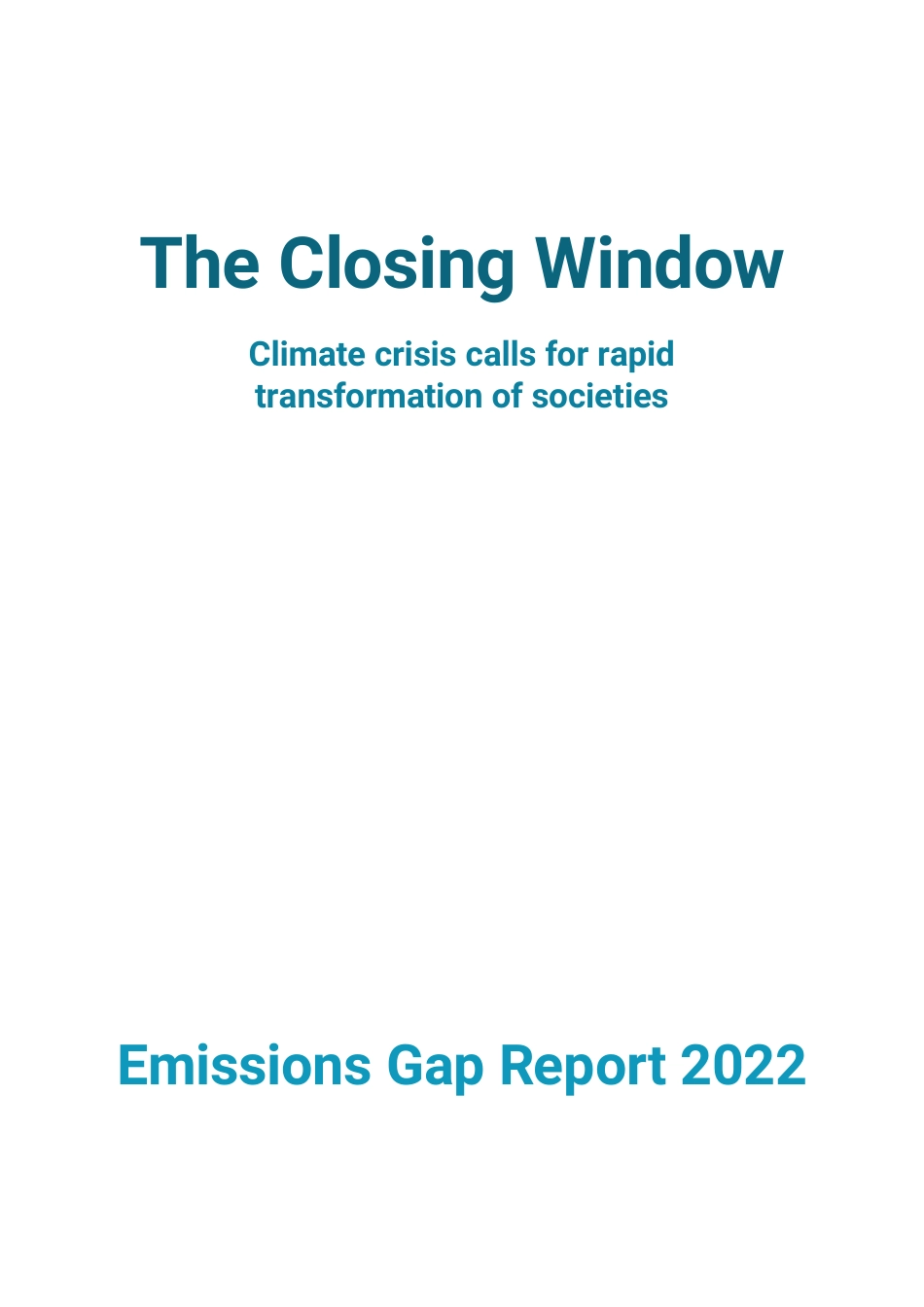Emissions Gap Report 2022The Closing WindowClimate crisis calls for rapid transformation of societies© 2022 United Nations Environment ProgrammeISBN: 978-92-807-3979-4Job number: DEW/2477/NAThis publication may be reproduced in whole or in part and in any form for educational or non-profit services without special permission from the copyright holder, provided acknowledgement of the source is made. The United Nations Environment Programme would appreciate receiving a copy of any publication that uses this publication as a source.No use of this publication may be made for resale or any other commercial purpose whatsoever without prior permission in writing from the United Nations Environment Programme. Applications for such permission, with a statement of the purpose and extent of the reproduction, should be addressed to the Director, Communication Division, United Nations Environment Programme, P.O. Box 30552, Nairobi 00100, Kenya.DisclaimersThe designations employed and the presentation of the material in this publication do not imply the expression of any opinion whatsoever on the part of the Secretariat of the United Nations concerning the legal status of any country, territory or city or its authorities, or concerning the delimitation of its frontiers or boundaries.Some illustrations or graphics appearing in this publication may have been adapted from content published by third parties. This may have been done to illustrate and communicate the authors’ own interpretations of the key messages emerging from illustrations or graphics produced by third parties. In such cases, the material in this publication does not imply the expression of any opinion whatsoever on the part of the United Nations Environment Progr...



